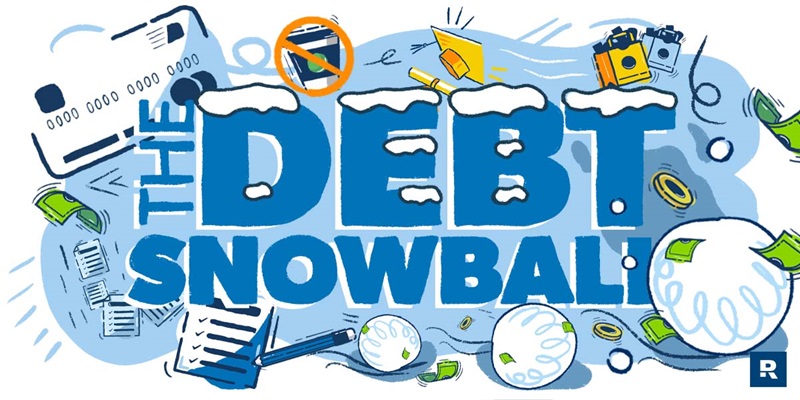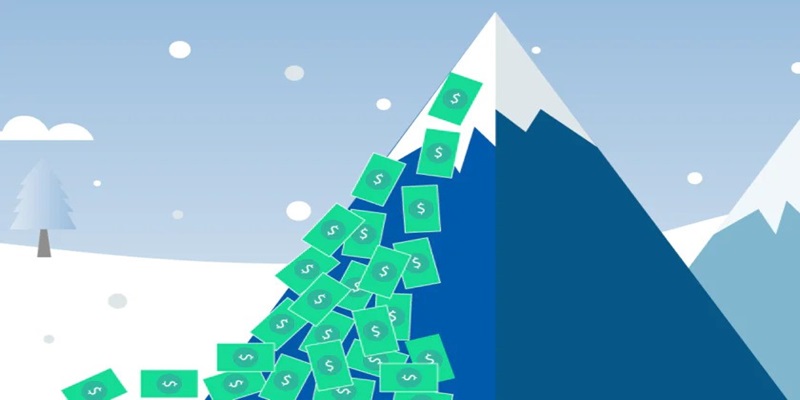The Snowball Vs Avalanche Method - Choosing The Best Way To Pay Down Debt
But where do you begin when there’s a mountain of payments ahead? Two trends are running neck and neck in this debt-repayment marathon: debt snowball and debt avalanche. Each represents a different road to financial freedom, but which is best for you? The following rundown on the pros and cons of the snowball and avalanche methods will inform you so you can finally decide which direction to take to take control of your financial future.
Debt Payoff Strategies: The Snowball Vs. Avalanche Method
There are two significant ways to pay off your debt: the snowball method and the avalanche method. While they both have their respective merits that can enable you to attain financial freedom, you should know the difference to choose which will work for you.
The Snowball Method: Building Momentum
The snowball method involves paying off your smallest debts first, regardless of their interest rates. You make minimum payments on all debts while putting extra money toward the smallest balance. When that’s paid off, you move to the next smallest debt, and so on.
The Avalanche Method: Maximize Your Interest Savings
On the other hand, the avalanche method puts your debts in order of the interest rates on them. You still make minimum payments on every debt but put any extra money toward the debt with the highest interest rate. When that debt has been paid off, you work on the next highest-interest debt.
The Snowball Method: Gaining Traction One Debt At a Time

The snowball method of repaying your debts depends on obtaining psychological wins and keeping motivation. In simple terms, how this works is:
Start Small, Build Big
Highlight all your debts, from the smallest to the largest, without regard to their interest rates. You want to focus on and pay off the smallest debt first, making minimum payments for the other debts. This approach gives you fast-coming wins that boost your confidence and motivation.
Roll Your Payments
Once you’ve paid off your smallest debt, take the amount you were paying on it and apply that money toward the next smallest debt. That “snowball” effect helps accelerate your debt repayment because you begin attacking more extensive and significant balances.
Psychological Benefits
The snowball method takes advantage of little wins. The sense of accomplishment from eliminating each debt provides motivation and helps you become more serious about your journey to becoming debt-free. That can be a priceless psychological boost for many who have problems maintaining long-term commitment toward their financial objectives.
Possible Drawbacks
The Snowball Method is incredibly motivating; however, it may set you up to pay more interest in the long run than other methods. You have to weigh that against the psychological advantages that may arise when you decide whether this method is best for you.
The Avalanche Method: The Approach To Paying High-Interest Debt First

The avalanche method is a powerful debt reduction strategy focusing on high-interest debt first. It might save you money over time by reducing the total interest you will pay.
In the avalanche method, you pay all your debts’ minimums but put any additional money toward the balance, charging the highest interest rate. After that's paid, you work on the next highest-interest debt, and so on, an accelerating process referred to as a “snowball effect”-the positive momentum builds as you go.
Avalanche Method Pros
It saves money: The sooner you pay high-interest debt, the less interest you pay over time.
You will accelerate debt payoff: The more high-interest debt balances you can eliminate, the quicker you can free up more money to put toward your remaining debt.
Optimal mathematically: This is the perfect method, strictly from a financial perspective.
Possible Cons
However, if the interest rate isn’t that high, the avalanche method may take time before you realize real progress. This might demoralize several people and reduce their motivation.
Is It for You?
The avalanche method is best for disciplined people motivated by long-term monetary advantages. It's also well-suited for anyone with high-interest debt, such as credit card balances. However, consider another approach if you need quick wins to keep you going.
Snowball Vs Avalanche: Which Method Is Best For You?
The Real Differences: Snowball and Avalanche
Two of the most popular methods for getting out of debt are Snowball and Avalanche. Although the objective of both methods—to become debt-free—pertains to each strategy, significant differences separate the two. The snowball method involves paying off the smallest debts first, while the avalanche method focuses on debts with the highest interest rates.
Psychological vs Mathematical Advantages
The snowball method presents some real psychological advantages. As you quickly eradicate smaller debts, it builds momentum and may encourage you to continue on your path to debt-free. This method is often helpful for anyone who cannot sustain motivation.
In the final analysis, the best method considers your financial situation and psychological makeup. If you need quick wins to stay motivated, the snowball method may be the way to go. However, the Avalanche might be better suited if you are disciplined and want to minimize interest payments.
Maximizing Your Debt Payoff Efforts

Automate Your Payments
Set up automatic payments so you never miss a debt due date. It’s a simple step to avoid late fees and maintain a good credit score. Schedule these payments after your paycheck hits your account to keep debt repayment front and centre.
Find Extra Income Sources
Look for an income increase that can help pay off the debt quicker. Take a part-time job, freelance, or sell things you may not need around your house. Even small chunks of extra money can make all the difference if applied constantly to your debt.
Negotiate with Creditors
Don’t be afraid to call your creditors and try to negotiate better terms. You might find one that can lower interest rates or improve payment plans. Most creditors will work with you if you have been in good standing with your payments.
Cut Unnecessary Expenses
Go over your monthly expenses and see where you can cut back. Take that money you save and apply it toward your debt payments. Little things like making your coffee at home or unsubscribing to things you do not use can make a big difference in paying off your debt over time.
Stay Motivated and Track Progress
Celebrate all those little victories throughout your debt payoff. Use visual aids like a debt thermometer or spreadsheet to track your progress. Sometimes, that motivates them to continue and follow through on their financial goals.
Your Path Forward: A Debt-Free Future
Just remember, the best is what you are going to do consistently. Both will take you to your goal, but consistency is the way to financial freedom. Some base this on personality, financial situation, or motivational levels. You can also combine elements of the snowball and avalanche methods to make a hybrid plan. Most importantly, though-start today. You are taking a big step toward your future as you tackle your debt and unlock new opportunities.